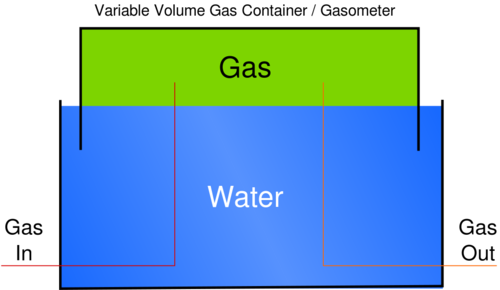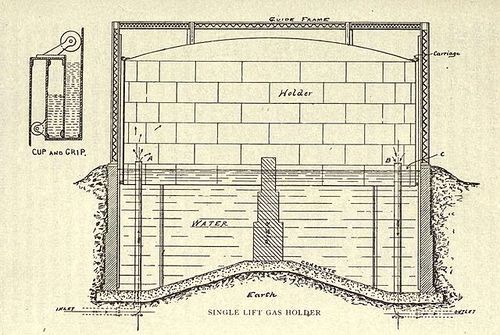Gas Holder
Jump to navigation
Jump to search
A gas holder provided storage for the purified, metered gas. It acted as a buffer - removing the need for continuous gas production. The weight of the gasholder lift (cap) controlled the pressure of the gas in the mains, and provided back pressure for the gas making plant. A watered gasholder, consisted of two parts: a deep tank of water that was used to provide a seal, and a vessel that rose above the water as the gas volume increased.

Gas holder with an external fixed frame. Water provides a seal. The whole tank floats in a circular water reservoir, held up by the roughly constant pressure of a varying volume of gas. The pressure is determined by the weight of the structure, and the water providing the seal for the gas within the moving walls. Besides storing the gas, the tank's design serves to establish the pressure of the gas system.
Possible Uses
- storage of biogas, methane, syngas
- holding CO2-rich off-gas from combustion (after purification with a biofilter) for subsequent use in a greenhouse or in the open field (CO2 Enrichment).
Links
- Wikipedia: Gas Holder
- The Telegraph: "Gasometers: a brief history"
